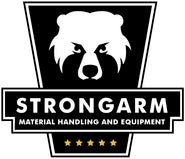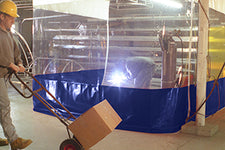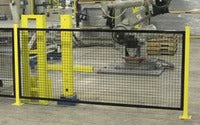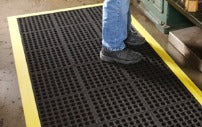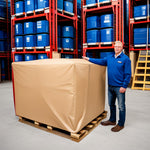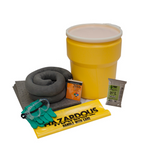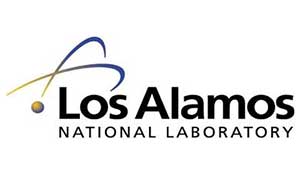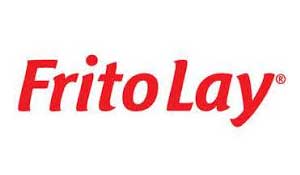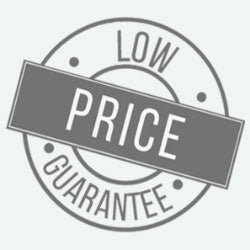Pharmaceutical facilities must operate under strict regulatory standards. From handling raw materials to warehousing final products, every stage must pass scrutiny under GMP and FDA regulations. That’s because pharma auditors don’t just check documents. They keep every floor under the microscope, review temperature stability, and inspect containment systems.
So, here’s the challenge: just a bit of uncontrolled airflow in a pharmaceutical storage area can make a pharma audit unsuccessful. This might even lead to product recalls and other corrective actions.
Temperature stability is the most essential factor in a pharma audit because it affects the efficacy, shelf life, and safety of pharmaceutical products. Even a slight deviation in temperature can harm product quality. Therefore, pharmaceutical businesses must focus on temperature control as the first and foremost element in achieving audit-readiness.
Interestingly, it’s possible to pass a pharma audit by maintaining temperature without investing millions in building a new infrastructure. Installing insulated industrial curtains is an effective way to achieve it.
Wondering how?
In this blog post, we’ll explore audit requirements for maintaining temperatures within cold storage warehouses and other pharmaceutical facilities. We’ll also discuss how using insulated warehouse curtains can create a bigger impact on the success of a pharma audit.
What Do Auditors Look for in a Pharma Audit?
In pharmaceutical environments, auditors focus on product integrity and patient safety. Their checklist is based on the following core areas:
Temperature uniformity
Auditors don’t just check a single temperature reading. They require documented proof that the storage areas maintain consistent temperature within a specific range (e.g. from 15° to 25°).
Zero tolerance for cross-contamination
There must be a separation between storage areas handling various materials, potency levels, and processes. Therefore, auditors check if high-potency pharmaceutical ingredients are stored in dust-controlled segregated zones. The goal is to make sure there is no cross-contamination due to air transfer.
Documentation and validation
Auditors might also ask for specific reports or validation protocols that reveal how effectively you are able to implement containment strategies in your facility. They will also review the standard operating procedures being used in the cold storage areas to maintain separation barriers.
The Role of Insulated Industrial Curtains in Passing a Pharma Audit
Industrial insulated warehouse curtains are a direct solution to the above-mentioned core concerns auditors look for. These cost-effective curtains act as versatile assets in the following ways:
Temperature control
It’s challenging to achieve temperature control in large cold storage warehouses. However, installing insulated industrial curtains makes it possible by dividing a large space into small, sealed environments that are easier for HVAC systems to manage. This partitioned approach minimizes the burden of maintaining consistent temperature of an entire cold storage area.
Since hot or cold spots can be red flags, facility managers should address the issue by installing insulated barriers. Insulated warehouse curtains act as effective barriers by minimizing thermal transfer, maintaining internal climate, and reducing energy costs.
Containment

Physical segregation in pharmaceutical settings is a compulsory element to make audit-readiness a successful process. Insulated warehouse curtains effectively make segregation possible. Without any permanent construction, these floor-to-ceiling curtains enable facility managers to divide workspaces for various operations (such as material storage areas, packaging lines, labeling sections, and quarantine areas).
These curtains act as a crucial defense system for achieving contamination control. They provide containment of airborne particles, minor spills, and dust within a specific zone only. That way, you can easily prevent contaminants from spreading to other controlled zones. This tangible containment system also gives an impactful impression to the auditors that your pharmaceutical facility actively takes relevant measures to reduce the risks of cross-contamination.
Flexibility
Seasonal demand or new product launches often require cold storage warehouses to install reconfigurable curtains. Unlike permanent drywall partitions, the modular design of insulated warehouse curtains enables facility managers to easily reconfigure space. Additional segregation of sensitive pharmaceutical operations can also be conducted instantly with the help of these curtains.
The operational flexibility of insulated warehouse curtains creates a positive impression during audits. It represents a pharmaceutical facility that adapts to modification processes smartly.
How to Ensure Your Insulated Warehouse Curtains Are Audit-Ready
Not all warehouse curtains deliver the same benefits. An industrial curtain designed for just any warehouse cannot meet the strict demands of pharmaceutical auditors. Therefore, it’s wise to choose insulated industrial curtains that help you pass a pharma audit. To make it possible, look for softwall curtains that possess the following features:

The material of an insulated warehouse curtain says everything about its quality. Look for curtains made with non-shedding, non-porous, flame-retardant, and high-quality vinyl. Auditors might also verify its effectiveness during the sanitation validation phase. So, its cleanable surface should be able to withstand even aggressive disinfectants without degrading, peeling, or cracking.
High R-value
The R-value (insulating capability) of an industrial curtain is what makes it superior to a basic curtain. A higher R-value indicates that your insulated warehouse curtains are audit-ready. So, look for the ones with an insulated core that’s thick and durable. That way, it’s easier to prevent air leakage and increase temperature uniformity.
Secure sealing
Audit-ready insulated warehouse curtains must have a tight fit. Auditors also check if the cold air isn’t leaking through the floor. Therefore, select the ones that also provide one or more of the following design features:
Floor mounts: Combined with a buckle and strap, floor mounts fasten the insulated warehouse curtains to the floor. This directly prevents dust migration and thermal loss right from the bottom.
Velcro side attachments: Running vertically between each panel of the curtain, Velcro side attachments help eliminate visible openings or gaps that might lead to airborne contamination or temperature bleed.
How to Use Insulated Warehouse Curtains to Make the Audit Successful
Now that you know how to choose the right softwall curtains, the next step is to learn how to install them effectively. The following process will ensure that the new insulated warehouse curtains will directly contribute to a successful pharma audit:
Step 1: Conduct a gap analysis
It’s wise to pinpoint any thermal loss even before the arrival of pharma auditors. Implementing targeted improvements before the audit can increase your chances of success. So, walk through the facility and check any compliance gaps. Use an infrared thermometer or a thermal gun to scan curtain edges, walls, loading docks, and doorways. Look for thermal bridges, cold spots, or drafts that could hinder temperature uniformity or lead to cross-contamination.
Step 2: Select a curtain according to specific temperatures
After conducting the gap analysis, you must have an idea that specific zones within the facility might require a higher level of insulation. Based on your analysis, choose and install insulated industrial curtains nearby each zone that demands a higher level of temperature control and containment.
Step 3: Validate
Once you’re done with the installation, it’s time to include your curtains in the validation protocols. It requires you to carry out the following activities and write them down as a pre-audit record/ documented evidence:
1. Document the installation (IQ)
2. Verify that the insulated industrial curtains function effectively (OQ)
3. Conduct a Performance Qualification (PQ) analysis by reviewing the day-to-day performance of the curtains
These documented insights will act as strong evidence during a pharma audit. It will also show the auditors that you’ve been actively identifying the weaknesses of the temperature-sensitive zones of your pharmaceutical warehouse and implementing improvements immediately. The documented performance of the insulated curtains will also directly contribute to the success of the audit.
The Takeaway
It takes proactive efforts to pass a pharma audit. Fortunately, it’s possible to maintain an audit-ready pharmaceutical environment by installing insulated industrial curtains. However, what matters the most is investing in the curtains that are the right fit for your pharmaceutical facility. Identify your specific cold storage needs, explain your cold storage segregation plan to relevant manufacturers, and select the insulated warehouse curtains that help maintain temperature while preventing cross-contamination.
Once you’ve chosen the right softwall curtains and followed the correct installation process, you can be confident about facing even the toughest pharma audit.

